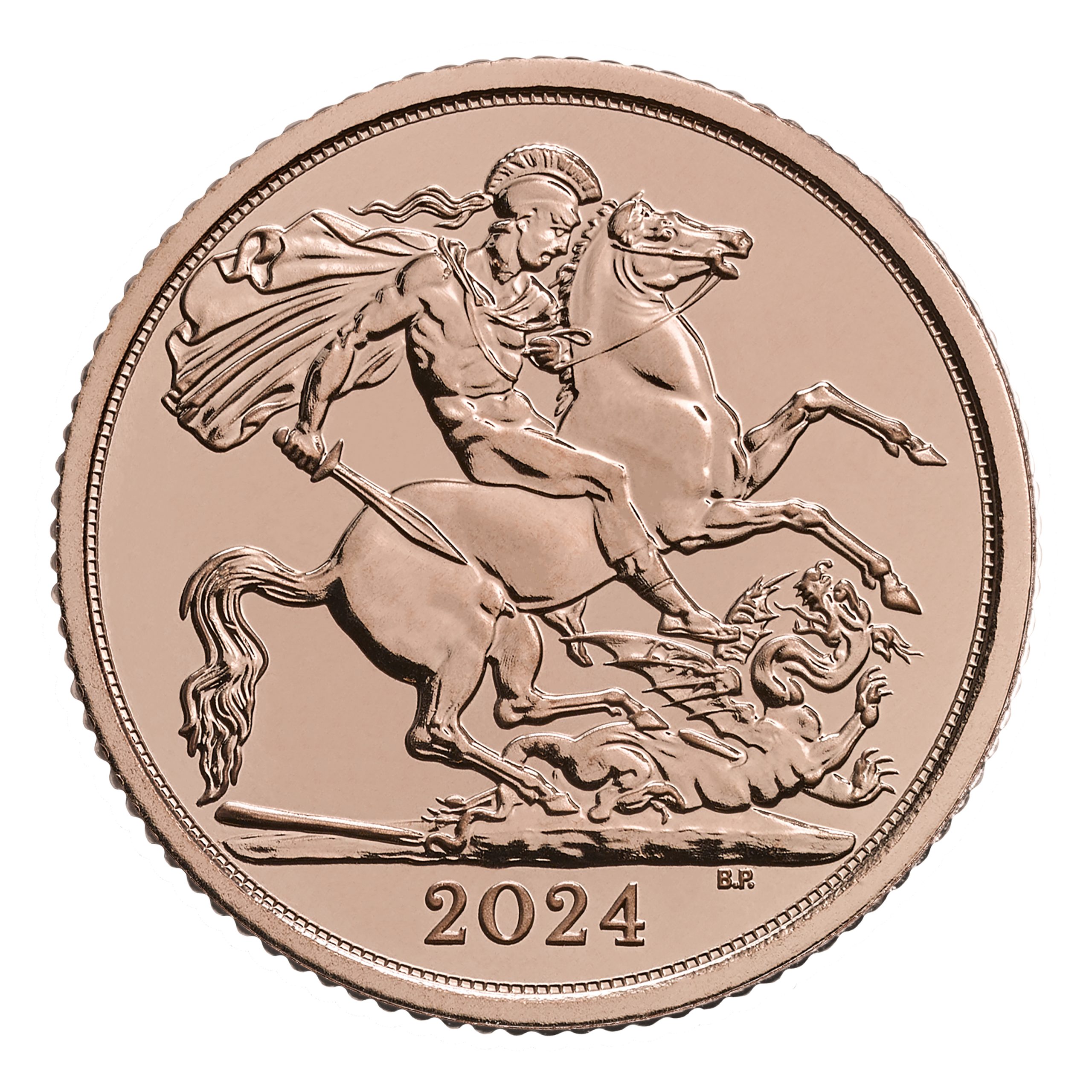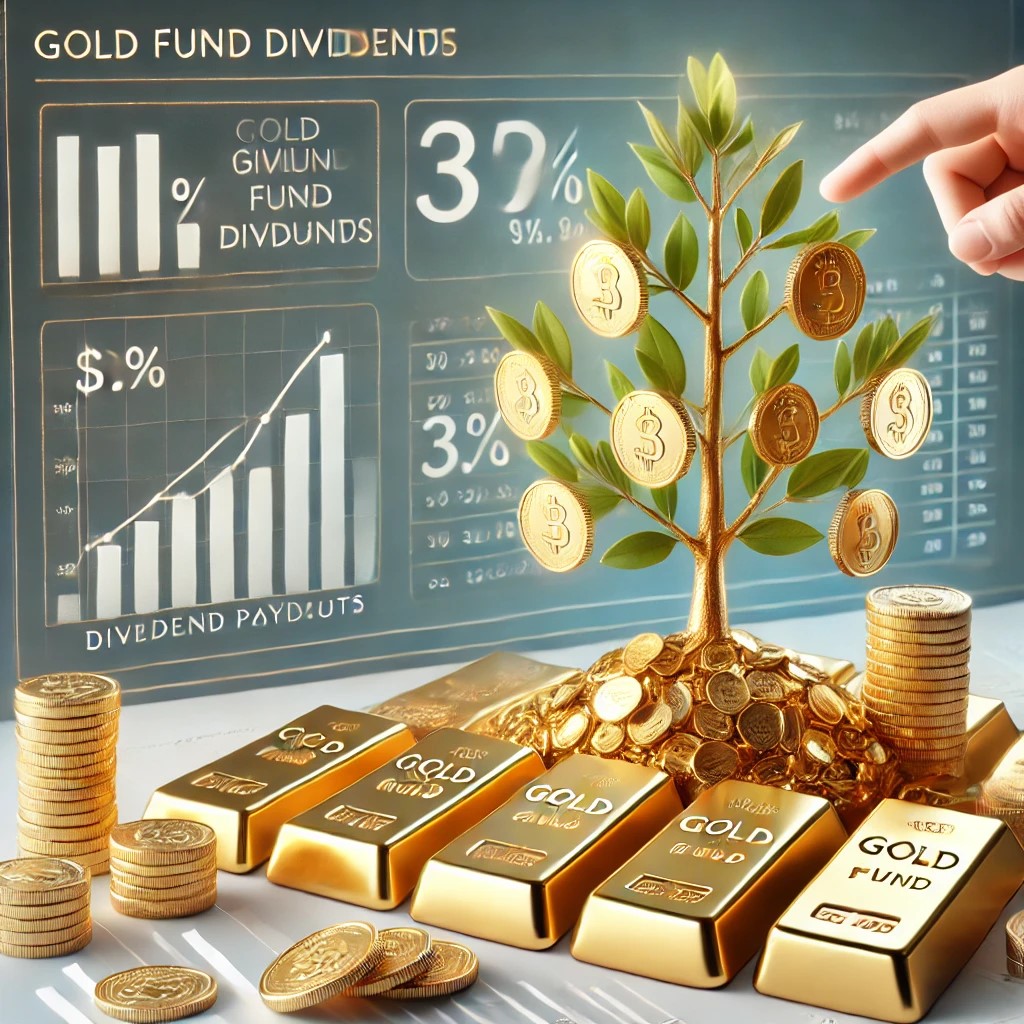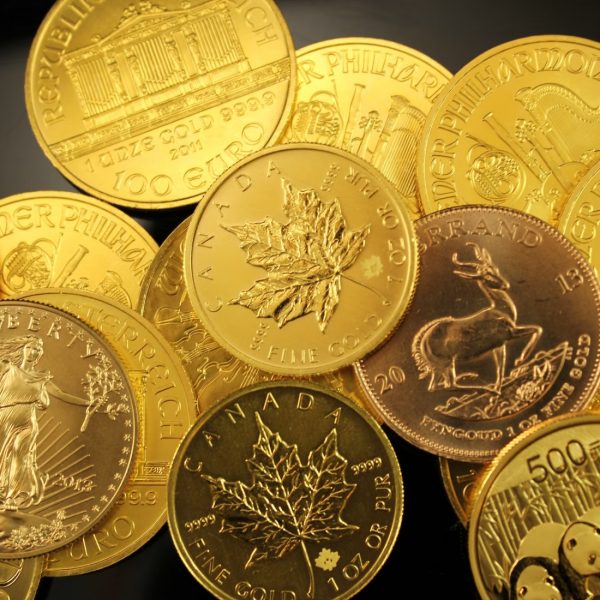How to Make Money with Gold
25/07/2024Daniel Fisher
Free & fully insured UK Delivery. Learn more
Secure & flexible payments. Learn more

Buyback Guarantee Learn more

Gold is synonymous with high value and wealth. So surely there are ways for everyday people to make money from the renowned precious metal?
While some well-known and obvious types of gold investment exist, we investigate a few more creative and diverse methods you could deploy to grow your wealth with gold.
In particular we look at how gold can be harnessed to achieve a number of different objectives and approaches, regardless of your current wealth.
The best-known way of financially benefiting from gold is also the simplest. Buy a lump of gold and wait for it to go up in value. While it sounds straightforward, there are obviously various factors which influence the success of this approach.
The form of gold you choose to buy for capital gain will significantly influence your potential for profiting. That’s because not all gold costs the same, is taxed similarly, or is as easy to sell.

Sticking to investment grade gold is the smartest choice if you’re seeking to own some physical gold to sit on and sell in the future at a profit. To qualify for this grade, the gold needs to be either a gold bar or coin of at least 22 karats in purity. Selecting gold coins or bars has the following benefits;
UK gold investors will benefit in this way from coins such as Sovereigns and Britannias.
An alternative method is to buy more unique gold items in the anticipation of their value rising over time. This may be deemed a riskier strategy than buying bullion, with the potential for higher gains if you manage to choose the item well. In reality, there are a number of potential pitfalls with this approach.
A smart alternative if you wish to own something with more upside potential than standard gold coins and bullion, is to opt for coins which qualify as investment grade but are limited in mintage. Coins such as the Royal Mint’s Tudor Beasts can be bought at a modest premium over their more vanilla counterparts. However, their worth can rise quicker than more common coins due to their limited production run.

If you’re simply hoping for the value of your gold to go up, then undoubtedly the timing of both your purchase and sale will contribute greatly to your final outcome.
Afterall, the value of gold can be volatile and like other asset classes, the price doesn’t move in a straight line. So when exactly should you buy gold?
Here are a few guidelines to help you maximise your profits;
Free ultimate guide for keen precious metals investor

If you already own some gold, then it can also provide a means to borrow money. By using your gold holdings as collateral, you can secure loans without having to sell your precious metal investments.
This approach allows you to leverage your gold to access funds for other ventures while maintaining ownership of the gold itself.
The value a gold-backed loan is typically a percentage of the current market value of your gold. If you fail to repay the loan, the lender has the right to sell your gold to recover the outstanding amount.
Quick Access to Funds
These loans can be processed relatively quickly since they are secured by a tangible asset.
Lower Interest Rates
Secured loans often come with lower interest rates compared to unsecured loans because the lender’s risk is mitigated by the collateral.
Retain Gold Ownership
You do not have to sell your gold, allowing you to benefit from any future appreciation in gold prices.
Market Fluctuations
If the price of gold drops significantly, the value of your collateral decreases, which could impact your loan terms or result in a margin call.
Loss of Gold
Failure to repay the loan means you could lose your gold, which might be worth more in the future than the loan amount.
Dependant on how you Invest the Loan
Using gold as leverage will only reap rewards if you use the proceeds wisely. Sticking the loan into a super high-risk investment could lead to total loss of capital and gold.

It may be that you have no capital to utilise for a gold purchase of any type. But that doesn’t mean you can’t still make money with gold.
The aesthetic appeal of gold lends to its use in jewellery, while some of gold’s physical properties ensure it’s widely used in electronics.
For these reasons, many of us probably own gold in various forms and objects at home. All of which can be sold for cash.
Jewellery
Broken necklaces, rings, earrings, and other jewellery pieces.
Dental Gold
Old dental crowns, bridges, and other dental work that contain gold.
Electronics
Gold-plated connectors, pins, and other components found in electronic devices.
The first step to selling items you no longer use is determining if they contain real gold. While jewellery is usually stamped with a hallmark, most other items won’t be. In these cases, it’s worth taking these objects to several potential buyers to test the gold for you and provide feedback. To three basic components which determine how much your scrap gold is worth are;
Determining Purity
Check the karat rating (e.g., 14k, 18k) stamped on the gold item, which indicates its purity. Gold is mixed with various alloys to enhance either it’s colour and appearance or improve its functionality.
Weighing the Gold
Use a precise scale to measure the weight of your gold in grams or ounces. If you have several items with different purities, it’s best to weigh items separately as each will fetch a different rate.
Current Market Price
Look up the current market price of gold for each level of purity to calculate its value. This price is fluid and volatile, so you may wish to track the gold price to sell your gold when prices are high.
Once you have identified and valued items, the next step is to sell your scrap gold. There are several avenues to consider, each with its pros and cons. It’s always recommended to speak to several possible buyers to ensure you’re getting a fair price. The ambiguity around various item’s value, creates opportunity for unscrupulous buyers to offer very low prices.
Local Jewellers are an obvious and convenient starting point as they can offer a quick and convenient sale. They usually pay quite low and melt the goods down to create new jewellery. Online specialist gold buying websites often provide competitive prices, but you’ll need to ensure they have a good reputation and clear terms. If you’re not dealing face to face, this kind of companies can exploit the fact that you’ve sent them your gold. Bullion dealers also sometimes offer a scrap metal buying service.
Find out what they could be worth

Usually, the way to make the most money is to take the highest risk options. The potential turbo-charged returns of some investment classes such as crypto currency are tempting to those seeking to grow their wealth. But putting all your money into unpredictable investments can lead to bankruptcy and heartache.
But gold’s long track record as a safe-haven asset has shown that the gold price tends to go up when many markets tumble. In that way, gold can be used as a counterbalance to racier assets. Owning some gold can provide peace of mind and a safety net to simultaneously take bigger risks.
Cryptocurrencies are known for their extreme price fluctuations. While they offer the potential for high returns, they also come with significant risk. Some people argue that the two asset classes are polar opposites, with gold providing intrinsic tangible value while crypto poses the risk of falling to zero. However, the two investments are far from mutually exclusive and actually work well together. Gold can serve as a stabilizing force in a portfolio heavy with cryptocurrencies.
Crystalize Profits with Gold
A technique we regularly witness with our customers is to use gold to solidify their crypto gains. When sufficient profit has been achieved through blockchain investments, ‘chips are taken off the table’, by switching funds into the security of physical gold.
Volatility Mitigation
During periods of intense cryptocurrency volatility, gold’s relatively stable value can help offset potential losses. This irons out instability, ensuring more predictable portfolio value.
Diversification
Adding gold to a crypto-focused portfolio diversifies your assets, reducing the impact of a sudden drop in cryptocurrency value.
The stock market can be unpredictable, with prices influenced by a myriad of factors including economic data, political events, and market sentiment. Gold can provide a safe haven during stock market downturns.
Balancing High-Risk Stocks
If your portfolio contains high-risk stocks, gold can balance the overall risk by acting as a less volatile asset. This enables investors holding gold to allocate funds into tech stocks and venture capital.
Crisis Management
In times of economic crises or market corrections, gold often retains or increases its value, offering protection against significant losses in stock investments. This enables gold holders to invest in stocks long-term by reducing the impact of inevitable stock market corrections.
Our automated portfolio builder will provide suggestions based on various investment objectives

While holding gold in its physical form may not provide an income, there are other ways that gold investors can receive regular payments. Gold funds, such as ETFs (Exchange-Traded Funds) and mutual funds, provide an opportunity to invest in gold without physically owning it.
These funds invest in gold-related assets, including gold mining stocks and physical gold, and can generate income through dividends.
While ETFs tend to track spot gold prices, more traditional gold equity funds contain a diversified portfolio of gold mining companies and other gold-related assets. They are managed by professional fund managers.
Many gold funds pay dividends to their shareholders. These dividends come from the profits generated by the fund’s investments, such as earnings from gold mining companies.
Dividend Payments
Gold funds may distribute dividends on a quarterly, semi-annual, or annual basis. The amount depends on the fund’s performance and the dividends received from its underlying assets.
Reinvestment Options
Shareholders can choose to receive dividend payments in cash or reinvest them to purchase more shares of the fund, potentially increasing future income. Reinvesting dividends can enhance overall returns through compounding, as additional shares generate more dividends over time.
Investing in gold funds that pay dividends is an effective way to generate income while participating in the gold market, but this approach may suit some investors better than others.
Regular Payments
Dividends provide a consistent income stream, which can be especially beneficial for investors seeking regular income. This can best suit investors who have retired but need to fund their lifestyle with other sources of income.
Income During Market Downturns
Even when gold prices fluctuate, dividend payments can provide a level of financial stability. While the amount of payment isn’t necessarily guaranteed, income generating assets are particularly helpful when the capital value drops significantly.
Growth and Income
Investors can benefit from both the potential capital appreciation of gold and the income generated by dividends. However, capital growth will likely be far more subdued than holding bullion directly or collectible coins.
Fees and Expenses
Be aware of the fund’s expense ratio, which can impact overall returns. Look out for additional fees, such as management fees or load fees, that may reduce your net income. However, at least investing in gold funds doesn’t require the cost of gold storage or insurance.
Risk of Poor Performance
A gold funds is only as successful as the skill of the fund managers. If the fund invests in gold mining stocks which go bust, then dividends and capital are at risk.

If you are willing to take a high level of risk, then certain gold-related financial instruments will allow you to leverage your available capital to speculate on the gold price. This provides the opportunity to generate some potentially huge amounts of money from gold. Not only that, but you can produce profits even when the gold price falls (if you guess correctly!).
But clearly, with great possible profits, comes immense possible pitfalls. Due to the enhanced levels of possible loss, only sophisticated investors are allowed to access this market. Successful trading of gold futures and options requires a deep understanding of the market, technical analysis, and trading strategies. Futures and options positions also need continuous monitoring and adjustment based on market movements.
Gold futures are standardized contracts to buy or sell a specific amount of gold at a predetermined price on a set future date. These contracts are traded on futures exchanges and are commonly used for both hedging and speculative purposes. Futures trading involves a margin system, allowing traders to control large positions with a relatively small amount of capital. This leverage can amplify both gains and losses. Unlike the other money-generating methods in this article, cash can be created in very short periods of time.
Long Position
Buying futures contracts in anticipation of rising gold prices.
Short Position
Selling futures contracts expecting a decline in gold prices.
Spread Trading
Simultaneously buying and selling futures contracts with different delivery dates or prices to profit from changes in the price difference.
Gold options give the holder the right, but not the obligation, to buy or sell gold at a specific price within a certain timeframe. Options are versatile instruments for speculating on gold price movements. Unlike with gold futures, investors can limit their loss if the market moves against their bet. By simply not exercising the option, losses are limited to just the option premium. Premiums can vary based on the gold price, strike price, time to expiration, and market volatility.
Call options provide the right to buy gold at a specified strike price before the expiration date. Meanwhile, put options offer the right to sell gold at a specified strike price before the expiration date.
Buying Calls
Speculating on an increase in gold prices by purchasing call options.
Buying Puts
Speculating on a decrease in gold prices by purchasing put options.
Selling Options
Selling call or put options to earn premium income, with the risk of having to fulfil the contract if the option is exercised.
Spreads and Combinations
Using multiple options contracts to create strategies like straddles, strangles, and spreads, which can profit from different market scenarios.


Investing in gold can be profitable due to its potential for capital appreciation, ability to hedge against inflation, and value stability during economic downturns. It’s an effective way to diversify your portfolio, but it’s essential to consider market conditions and long-term investment goals.
Yes, you can earn money from your gold by selling it, using it as collateral for loans, trading gold futures or options, investing in gold funds for dividends, or selling scrap gold items. Each method offers different benefits and risks, so choose the one that aligns with your financial goals.
To make the most money from gold, invest in physical gold during market lows and sell during highs, trade gold futures or options for leveraged gains, invest in gold funds for dividends and capital appreciation, and sell scrap gold for immediate cash. Diversify strategies to maximize returns and manage risks.
Yes, you can still get rich from gold, but it requires a long-term investment strategy. Gold can offer significant returns through capital appreciation, hedging against inflation, and portfolio diversification. However, it is not a quick path to wealth and should be part of a diversified investment approach.
Live Gold Spot Price in Sterling. Gold is one of the densest of all metals. It is a good conductor of heat and electricity. It is also soft and the most malleable and ductile of the elements; an ounce (31.1 grams; gold is weighed in troy ounces) can be beaten out to 187 square feet (about 17 square metres) in extremely thin sheets called gold leaf.
Live Silver Spot Price in Sterling. Silver (Ag), chemical element, a white lustrous metal valued for its decorative beauty and electrical conductivity. Silver is located in Group 11 (Ib) and Period 5 of the periodic table, between copper (Period 4) and gold (Period 6), and its physical and chemical properties are intermediate between those two metals.